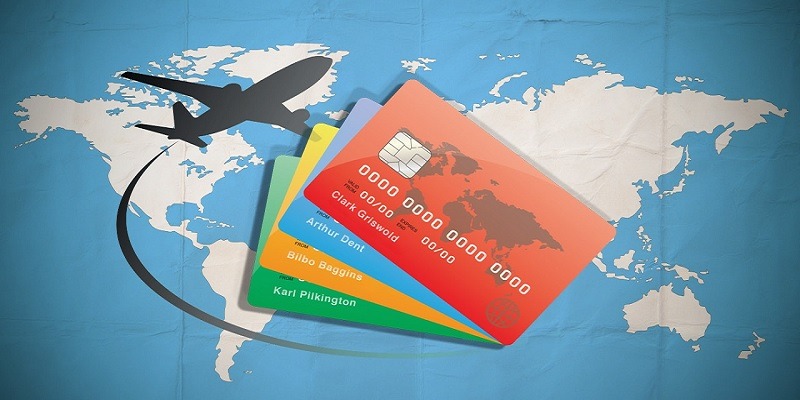 Do you plan on traveling overseas in the foreseeable future? If so it’s best to plan ahead and get yourself a credit card with no foreign transaction fees! But what are foreign transaction fees? In this post we’ll go over what they are and how you can easily avoid them!
Do you plan on traveling overseas in the foreseeable future? If so it’s best to plan ahead and get yourself a credit card with no foreign transaction fees! But what are foreign transaction fees? In this post we’ll go over what they are and how you can easily avoid them!
What Is a Foreign Transaction Fee?
A foreign transaction fee is a surcharge that is applied to your purchase made overseas. These fees are in place to cover the cost of converting currency. Normally these fees can be as high as 3%. Although this doesn’t seem that high, remember if you plan on spending a lot of money on your trip, that 3% can be a high amount when you come back to the states.
The card network that handles the transaction charges your bank a fee for completing it. The bank that issued your card then passes the cost on to you at an increased rate. Keep in mind that you can still acquire foreign transaction fees even if you’re not physically using your card abroad. You will still be charged if you’re using your card from a non-U.S. retailer.
How Much Do These Fees Cost?
Foreign transaction fees are calculated based on a percentage of the total cost. These percentages generally range from 1% – 3%. With this in mind, you can expect to pay between $10 – $30 for every $1000 you spend over seas. Paying on the high end of the scale can easily start to add up and negate your points/miles used for the trip.
For example, if your current card pays double rewards on every dollar you spend, every $1,000 in purchases would yield 2,000 miles or points. Assuming your rewards are converted on a 1:100 basis, they’d be worth $20. If your card charges a 3% foreign transaction fee, you’re not only zeroing out the rewards you’ve earned, but you’re also going into the hole another $10. That’s why it’s so important to look for a card with no foreign transaction fees.
Choosing the Right Travel Rewards Card
You may think that you just need to find a card with no foreign transaction fees, but it’s not that simple. It’s still very important to make sure all aspects of the card match what you need. Here are 3 categories that are important to check for:
- Rewards Structure: Have a rewards card is only good if you are able to use it everyday. It should match your lifestyle and the purchases you make so that you can get the most bang for your buck. The points should be able to be spent on rewards that also reflect what you want out of them. For instance, a card that pays cash back when you shop at grocery stores or gas stations won’t do you much good if your top priority is earning discounts on flights or hotel stays.Aiming for a travel credit card with a tiered rewards system makes getting the most bang for your buck easier. Such cards typically offer double or triple rewards when you spend in certain categories, such as hotels, airfare or restaurants, and 1 mile or point on everything else.
- Rewards Redemption: Always take into consideration on what you can redeem your points/rewards on. If you’re a member of a frequent flyer program, it’d be smart to have a card whose points can be redeemed into your flyers points. Most rewards cards allow you to do so, but it’s good to just make sure that it does. Just pay close attention to black out dates or any travel limitations.
- Annual Fee: While there are no-annual fee travel rewards cards there, many charge a premium for being a card member. If you’re looking at a hefty fee for a particular card, you’ll have to decide whether the rewards you can potentially earn are worth it.
Ideally, you want to go with a card that will allow you to earn back the annual fee in rewards. If your card carries a $95 fee, for instance, and you earn double miles on flights, you’d have to spend $5,000 on airfare each year to cover it. If you don’t think you’ll charge enough to cover the annual fee, you’re better off going with a card that doesn’t have one at all.
Should I Just Travel With Cash?
After reading all about foreign transaction fees, you’re probably thinking that using cash will be the smarter move. On the contrary, cash can be risky, especially when you’re travelling abroad. The rick of pick-pocketing is more common in other countries that it is in the United States. Additionally, most banks will charge you a fee for taking cash out of a foreign ATM.
With all of these things considered, we advise you to use a credit card overseas, but keep these things in mind:
- Find a credit card with no transaction fees-preferably one that is chip-enabled.
- Figure out what the currency conversion fees are before traveling overseas. If you will be charged more than 1%, look around for another credit card.
- Call your credit card issuer before you leave for your vacation overseas to let them know where you’re travelling to so they don’t think it is fraud when you make a transaction.
 |
 |
Bottom Line
Foreign transaction fees are simple and easy to avoid. Just make sure you decide on the right rewards card that matches your lifestyle and reflects your ideal way of redeeming your points. After you choose the right one for you, traveling will be a breeze and hopefully you’ll save some big bucks the next time you go when you avoid those foreign transaction fees!
Hopefully you found this post informative and useful. If you’d like to read any of our other guides, just be sure to check out more at Bank Guides!



